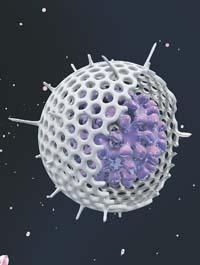Gene therapy against HIV

Therapy also uses stem cells and passes the first phase of testing
Researchers at the U.S. City of Hope Research Institute have been successful in testing a new anti-AIDS therapy. The results of the research have been presented in the specialized journal Science Transnational Medicine, according to which the anti-HIV genes introduced in therapy remain in the long term.
The experiment was conducted in patients with aids-related lymphoma. Basically, treatment allows the patient's body to generate anti-HIV weapons, while eliminating an essential receptor for virus proliferation.
To achieve this, first, the stem cells of the immune system are removed and the remaining immune system is removed, as is usually done in the treatment of lymphoma by transplant. Subsequently, three genes are added to the DNA of these stem cells: One cancels the CCR5 receptor that uses HIV to enter the cell and the other two deactivate HIV genes and make it unable to reproduce.
Treatment has no negative side effects and has passed the first phase. If it advances, the success will be double: on the one hand, it cures the lymphoma and, on the other, the AIDS virus cannot infect the cells and cannot reproduce. According to the researchers, "the goal is to cure AIDS."





